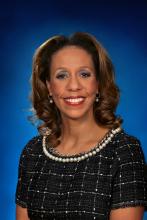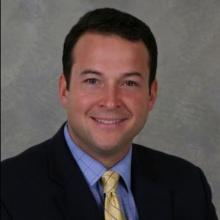When Kim Rucker arrived as new General Counsel at Tesoro Corporation (now Andeavor) in early 2015, she wanted to transform the legal organization into a unified team that is indispensable and valued. Key activities were running the organization like a business, not a cost center; treating every corporate dollar as its own; and demonstrating value as a strategic business partner.
The original legal department was organized like a law firm with legal specialties, such as HR, labor and employment; corporate governance, securities and finance; and real estate and marketing. In the new organization, there are two types of teams: 1) Centers of Excellence that support those traditional specialty areas, including a new legal operations group, and 2) Business Unit Support teams (marketing; commercial supply, trading and logistics; and EHS&S and refining).
"The new structure was designed to operate the legal team like a business by increasing accountability, effectively managing legal function spend, improving processes, team building, training and development of personnel, tracking KPIs and benchmarking against other legal functions—all to drive significant value add and trusted advisorship in the support of the strategic direction of the company," Rucker says.
As head of the new legal operations group, Associate General Counsel Cliff Barr's organizational and managerial skills gained as a JAG attorney in the Air Force came in handy during the transition, along with the use of Lean Six Sigma and process management methodologies. For example, using existing resources, he rolled up the paralegals into the new legal ops group and organized legal operations support into four main areas, each of which is led by a manager.
The other legal operations areas are Records and Information Governance, Vendor Management, and Financial Management and Administration.
The team is also keenly focused on employee development. When paralegals were reporting to individual attorneys, they weren't receiving standardized training, development or promotional opportunities, Barr explains. With the centralized structure, there is now a strong focus on professional and career development and team building. In creating the group, Barr and his colleagues carefully measured their progress against the ACC Stages of Legal Operations Maturity.
The legal operations team implemented processes for the tracking and management of expenses and policies for outside counsel engagements. New expertise in budget analytics and reporting has contributed to a 28 percent reduction in legal spend.
Turning their attention to outside counsel, Andeavor partnered with Counsel Management Group (CMG) to launch and implement an RFP process that would deliver more value, greater predictability and better outcomes. In response to the RFP, more than 70 law firms submitted a total of 442 proposals across 16 portfolios of work. CMG provided data analytics to help measure law firm value based on these weighted criteria:
- responsiveness (willingness to propose AFAs)
- quality of fixed fee submissions
- timekeeper rates
- rate and volume discounts
- complimentary services offered, such as trainings and briefings.
They verified efficiency by comparing cost figures across the tasks in the particular phases. This enabled apples-to-apples comparisons and showed that the difference in the fee proposals was attributable to cost-effectiveness, not widely divergent views of scope.
The process generated some surprises. As an example, for single plaintiff employment litigation, across three key phases combined (early case assessment, discovery and dispositive motions), the lowest proposal was 76 percent lower than the highest. And, some firms sought to charge nearly 50 percent more for their per-phase fixed fee than other firms with similar hourly rates.
"This type of analysis goes far beyond rates and staffing. It was a deep dive to understand efficiency, and to answer the question, 'What should this work cost?'" says Fred Paulmann, consultant at CMG.
By structuring the analysis this way, the team was able to see beyond the hourly rate and identify those firms that could complete the work at an effective cost. Andeavor increased fixed fee and related arrangements by 30 percent in one year.
"We learned that efficiency is just as important as price and started to see that there were multiple ways to slice the apple. CMG pointed out the advantages to taking different approaches, and there were some things we wanted to set up hourly," Barr says. "We were amazed at the efficiency and savings that could be realized."


